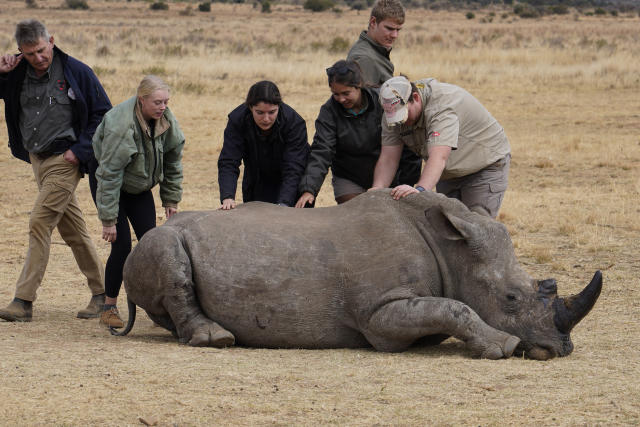South African researchers have begun testing nuclear technology to deter rhino poaching. Traditionally, rhinos were de-horned to dissuade poachers, but this practice disrupted their social structures.
Now, scientists are embedding radioactive isotopes into rhino horns, marking a significant advancement in conservation efforts.
Read also: Orange SA to sell 40% stake as it plans to leave Mauritius
Innovative Use of Radioactive Isotopes in Rhino Horns
Researchers have implemented a novel technique at a rhino nursery in Limpopo by embedding radioactive isotopes into rhinos’ horns. The radiation from these isotopes marks anyone who handles the horn, making it detectable at international borders.
This technique is superior because the radiation remains on the horn and anything it contacts, even if the tracker is removed. This persistent radiation makes it nearly impossible for traffickers to evade detection.
Collaboration with Nuclear Technology Experts
This initiative collaborates with nuclear researchers from the University of the Witwatersrand’s Radiation and Health Physics Unit. They have injected 20 live rhinos with these isotopes. Professor James Larkin, who heads the project, explained the approach.
“We are doing this because it makes it significantly easier to intercept these horns as they are being trafficked over international borders. There is a global network of radiation monitors designed to prevent nuclear terrorism, and we’re piggybacking on the back of that,” Larkin told Africa News.
Larkin emphasised the urgent need for innovative anti-poaching strategies, citing the limitations of existing methods and the continued loss of rhinos in South Africa.
Professor Nithaya Chetty, dean of the science faculty at Witwatersrand, assured that the radioactivity dosage is very low and has been extensively tested to ensure it does not negatively impact the animals. This ensures the rhinos’ safety while effectively deterring poachers.
Read also: Africa Data Centres expands cloud services in South Africa with $108.9m funding
Addressing the Broader Issue
While elephant ivory is trafficked for its use in arts and crafts, rhino horn is primarily sought by criminal groups in Asia due to the mistaken belief that it has therapeutic properties. This demand fuels a lucrative illegal market, threatening rhino populations.
This innovative method of using radioactive isotopes offers a promising solution to the persistent problem of rhino poaching. By leveraging advanced technology and global radiation detection networks, South Africa is taking a bold step towards preserving its rhino populations and maintaining ecological balance.
As the project progresses, it could serve as a model for other countries battling poaching. Integrating nuclear technology into wildlife conservation demonstrates how interdisciplinary approaches can address complex environmental challenges. With continued innovation and international cooperation, future strategies may become more effective in protecting endangered species and ensuring their survival for generations.











